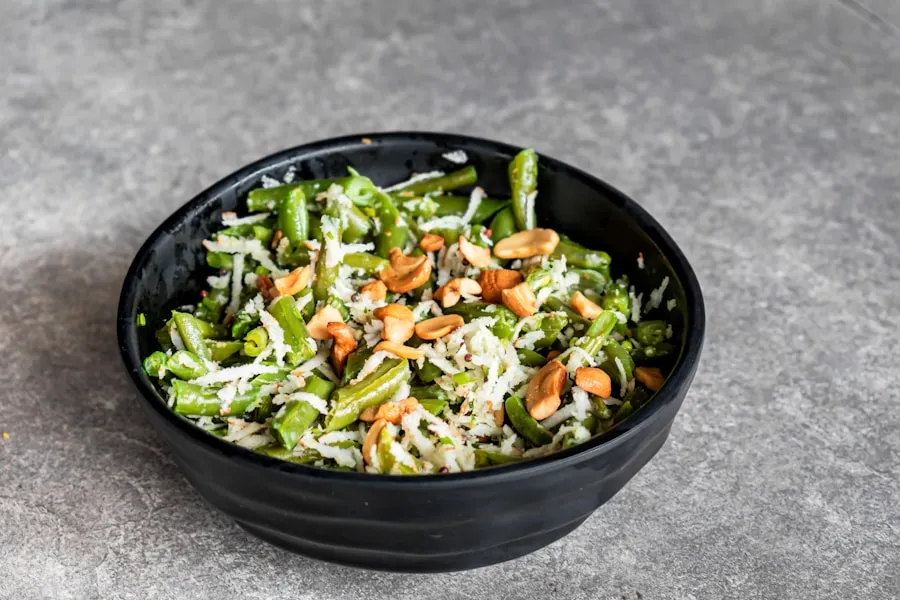Gout is a form of arthritis that occurs when uric acid builds up in the body and forms crystals in the joints, leading to inflammation and intense pain. The condition is often characterized by sudden and severe attacks of pain, swelling, redness, and tenderness in the joints, particularly in the big toe. Gout can be triggered by various factors, including diet, genetics, obesity, certain medications, and underlying health conditions such as high blood pressure and diabetes. Dietary triggers for gout flare-ups often include foods high in purines, such as red meat, organ meats, seafood, and alcohol. It is important for individuals with gout to be mindful of their diet and lifestyle choices to manage the condition effectively and prevent recurrent flare-ups.
The Link Between Green Beans and Gout Flare-Ups
Green beans are a popular vegetable that is commonly included in various cuisines around the world. While green beans are generally considered a healthy food choice due to their high fiber and nutrient content, some individuals with gout may wonder about the potential impact of green beans on their condition. Green beans are low in purines, which are natural compounds that are broken down into uric acid in the body. As such, green beans are not typically considered a significant trigger for gout flare-ups. However, it is important to note that individual responses to dietary factors can vary, and some people with gout may still experience symptoms after consuming green beans. It is advisable for gout sufferers to monitor their own reactions to green beans and other foods to determine their personal triggers for flare-ups.
Moderating Green Bean Consumption: How It Helps Gout Sufferers
For individuals with gout, moderating green bean consumption can be a helpful strategy for managing the condition and reducing the risk of flare-ups. While green beans are generally low in purines and are not likely to cause significant increases in uric acid levels, it is still important to consume them in moderation as part of a balanced diet. By incorporating green beans into meals in appropriate portions, gout sufferers can benefit from the vegetable’s nutritional value without overloading their bodies with excessive purines. Additionally, consuming green beans as part of a varied and balanced diet can contribute to overall health and well-being, which is important for managing gout and preventing complications associated with the condition.
Alternative Nutrient-Rich Foods for Gout Management
In addition to green beans, there are many other nutrient-rich foods that can be beneficial for individuals with gout. These include fruits, vegetables, whole grains, lean proteins, and healthy fats. Fruits such as cherries, strawberries, and blueberries have been associated with lower levels of uric acid and reduced risk of gout attacks. Vegetables like spinach, kale, and broccoli are also low in purines and can be included in a gout-friendly diet. Whole grains such as oats, quinoa, and brown rice provide fiber and essential nutrients while being low in purines. Lean proteins like tofu, poultry, and eggs can be consumed in moderation to support muscle health and overall nutrition. Healthy fats from sources like avocados, nuts, and olive oil can contribute to heart health and reduce inflammation in the body.
Tips for Incorporating Green Beans in a Gout-Friendly Diet
When incorporating green beans into a gout-friendly diet, there are several tips that can help individuals manage their condition effectively. It is important to choose fresh or frozen green beans over canned varieties, as canned vegetables may contain added salt or preservatives that can contribute to inflammation and exacerbate gout symptoms. Cooking green beans by steaming or boiling them lightly can help retain their nutritional value while minimizing the risk of excessive purine intake. Additionally, pairing green beans with other gout-friendly foods such as whole grains, lean proteins, and healthy fats can create balanced and satisfying meals that support overall health and well-being. By being mindful of portion sizes and overall dietary balance, individuals with gout can enjoy the benefits of green beans without compromising their condition.
Consulting a Dietitian for Personalized Gout Management
For personalized gout management and dietary guidance, consulting a registered dietitian or nutritionist can be highly beneficial. A qualified professional can help individuals with gout understand their specific dietary needs and develop a personalized meal plan that aligns with their health goals and preferences. A dietitian can provide valuable information about portion control, food choices, meal timing, and overall dietary patterns that can support gout management and reduce the risk of flare-ups. Additionally, a dietitian can offer practical tips for grocery shopping, meal preparation, dining out, and navigating social situations while following a gout-friendly diet. By working with a dietitian, individuals with gout can gain the knowledge and skills they need to make informed decisions about their diet and lifestyle to effectively manage their condition.
Finding Balance in Green Bean Consumption for Gout Relief
In conclusion, green beans can be included in a gout-friendly diet when consumed in moderation as part of a balanced meal plan. While green beans are generally low in purines and are not likely to trigger significant gout flare-ups, it is important for individuals with gout to be mindful of their overall dietary choices and lifestyle habits to manage the condition effectively. By incorporating green beans along with other nutrient-rich foods into meals, individuals with gout can benefit from their nutritional value while reducing the risk of exacerbating their symptoms. Consulting a dietitian for personalized guidance and support can further enhance the effectiveness of dietary management for gout relief. With the right approach to diet and lifestyle, individuals with gout can find balance in their consumption of green beans and other foods to support their overall health and well-being.

